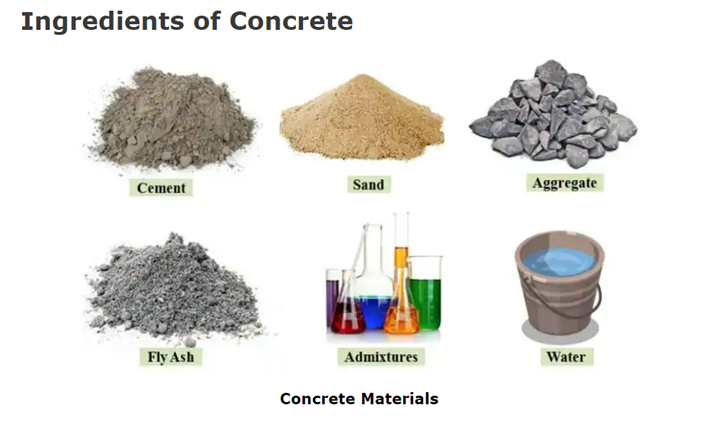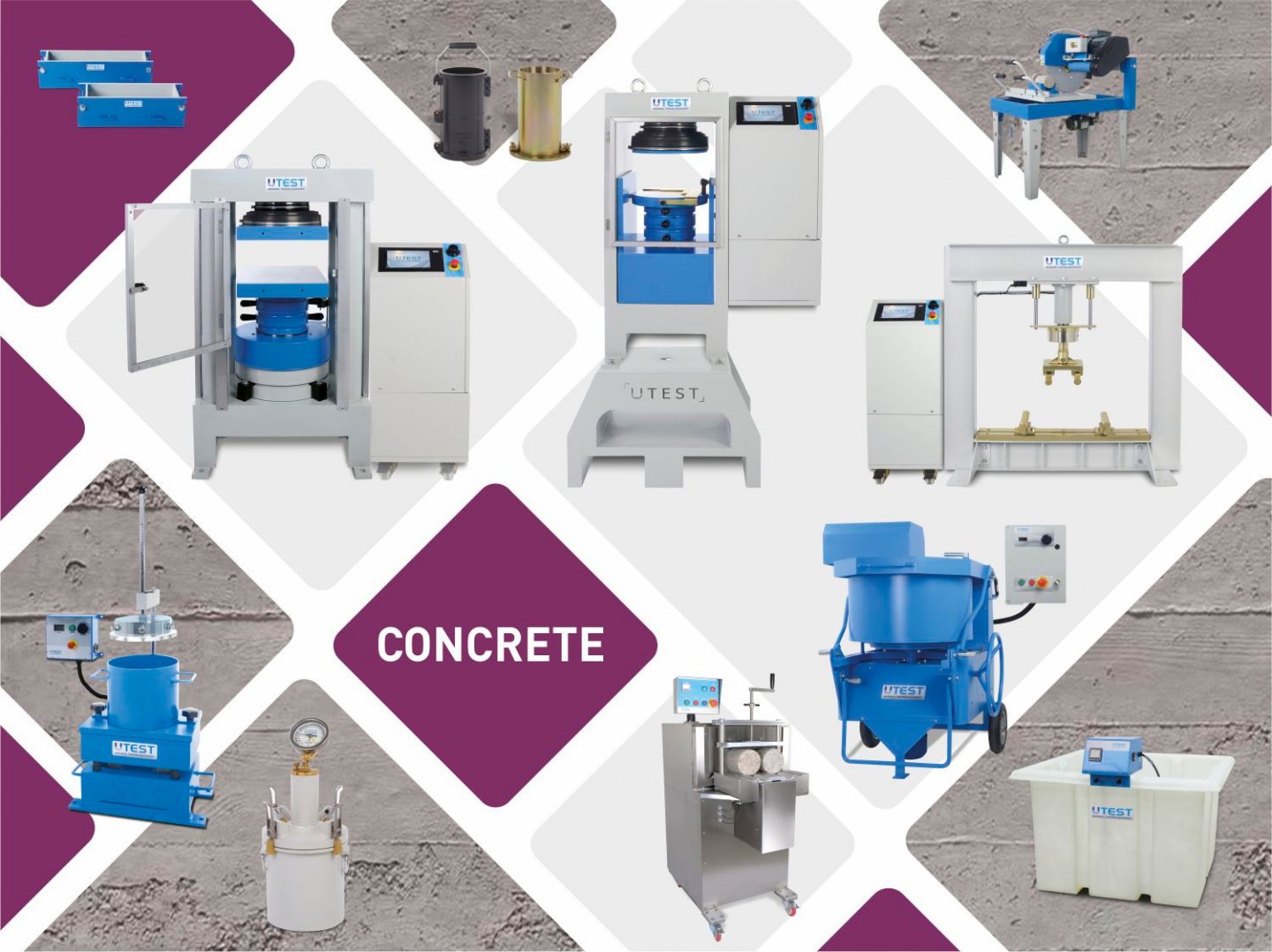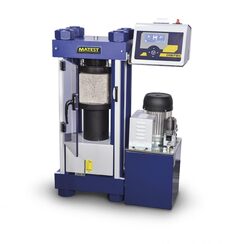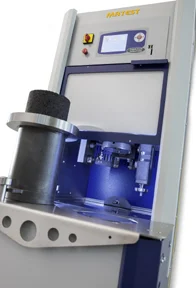Concrete is a building material that hardens over time by mixing cement, fine aggregate (sand), and coarse aggregate with water. Portland cement is a type of cement widely used in concrete production. Concrete technology deals with the study of the properties and practical applications of concrete. In building construction, concrete is used to create foundations, columns, beams, slabs and other load-bearing elements. In addition to cement, many other types of cement materials are used, including lime for lime concrete and bitumen for asphalt concrete used in road construction. Different types of cement with different properties and uses are used in concrete work. Types of cement include Portland pozzolan cement (PPC), fast-curing cement, and sulfate-resistant cement. The ingredients are mixed in specific proportions to achieve the required strength. The strength of the mixture is indicated by M5, M10, M15, M20, M25, M30, etc. Here M stands for mixture and 5, 10, 15, etc. stand for strength (kN/m2). In the United States, the strength of concrete is specified in pounds per square inch, which means pounds per square inch. The ratio of water and cement plays an important role in influencing various properties such as workability, strength, and durability.

Portland cement
Producing workable concrete requires an appropriate ratio of water to cement. When water is mixed with the material, the cement reacts with the water and a hydration reaction begins. This reaction helps the ingredients form a hard matrix that bonds the materials together into a durable, stone-like material. Concrete can be given any form. Because it is a fresh plastic material, it uses molds and forms of various shapes and sizes to create various shapes such as rectangles and circles. Various structural elements are made of concrete, including beams, slabs, foundations, columns, and lintels. ACI 318 Building Code Requirements for Structural Concrete and ACI 301 Specification for Structural Concrete serve as the standard codes of practice for concrete construction in the United States.

1. Cement
Cement is the main binder material used to bind other building concrete materials together. It is used for making mortar and concrete during the construction process.
2. Coarse Aggregate
Coarse Aggregate forms the major body of concrete. The aggregates contribute to the overall strength of the concrete by increasing density.
3. Fine Aggregate (Sand)
fine aggregate such as sand used to fill in the spaces left between the large coarse aggregate and to “lock” the larger pieces together. Sand helps in reducing the quantity of cement paste required and decreases the amount of shrinkage that could occur.
4. Admixture
Admixtures are added to enhance or modify the properties of fresh & hardened concrete. (Plasticizers, retarders)
5. Water
It is the key ingredient, which when mixed with cement, forms a paste that binds the aggregate together. The water contributes to the hardening of concrete through a process called hydration. Its role is major in concrete because the strength of concrete extensively depends on water to cement ratio and it is the critical factor in the production of “perfect” concrete.
6. Fly Ash
Fly ash use in concrete improves the workability of plastic concrete and the
strength and durability of hardened concrete. Fly ash use is also cost-effective.
Fly ash is added to concrete to reduce the amount of cement required for concrete,
which contributes to considerable savings in cement and the cost of concrete making.
There are different types of additives used to impart specific properties.
Impurities or additives, such as pozzolans or superplasticizers, are included in the
mixture to improve the physical properties of the wet mixture or finished material.
Currently, various types of concrete are produced for the construction of buildings
and structures. They have special properties and features that improve construction
quality as per requirements. concrete parts the components of concrete are cement,
sand, aggregate, and water. A mixture of Portland cement and water is called paste.
Therefore, we can say that concrete is a mixture of paste, sand and aggregate.
Sometimes stones are used instead of aggregate. When the cement paste is well mixed,
it covers and bonds the surfaces of the small and large aggregates. Immediately
after mixing the components, a hydration reaction begins, providing strength and
creating hard concrete. What are the grades of concrete? Concrete grade indicates
the strength required for construction. For example, the M30 grade means that the
required compressive strength for construction is 30 MPa. The first letter of the
brand "M" indicates the mixture and 30 indicates the required strength in MPa. Based
on various laboratory tests, concrete grades are expressed in mix proportions. For
example, for grade M30 the mixing ratio might be 1:1:2. Here, 1 is the cement ratio,
1 is the sand ratio, and 2 is the coarse aggregate ratio, depending on the volume or
weight of the material. Strength is measured in concrete cubes or cylinders by civil
engineers at the construction site. Cubes or cylinders are made by casting
structural elements and are stored for 28 days after hardening. A compressive
strength test is then performed to determine the strength. Common concrete grades
are M15, M20, M25, etc. For concrete work using ordinary cement, M15 is usually
used. For reinforced concrete structures, concrete grade M20 is used.
| Concrete Grade | Mix Ratio | Compressive Strength | |
|---|---|---|---|
| MPa (N/mm2) | psi | ||
| Normal Grade of Concrete | |||
| M5 | 1: 5: 10 | 5 MPa | 725 psi |
| M7.5 | 1: 4: 8 | 7.5 MPa | 1087 psi |
| M10 | 1: 3: 6 | 10 MPa | 1450 psi |
| M15 | 1: 2: 4 | 15 MPa | 2175 psi |
| M20 | 1: 1.5: 3 | 20 MPa | 2900 psi |
| Standard Grade of Concrete | |||
| M25 | 1: 1: 2 | 25 MPa | 3625 psi |
| M30 | Design Mix | 30 MPa | 4350 psi |
| M35 | Design Mix | 35 MPa | 5075 psi |
| M40 | Design Mix | 40 MPa | 5800 psi |
| M45 | Design Mix | 45 MPa | 6525 psi |
| High Strength Concrete Grades | |||
| M50 | Design Mix | 50 MPa | 7250 psi |
| M55 | Design Mix | 55 MPa | 7975 psi |
| M60 | Design Mix | 60 MPa | 8700 psi |
| M65 | Design Mix | 65 MPa | 9425 psi |
| M70 | Design Mix | 70 MPa | 10150 psi |
How to make concrete?
Concrete is made or mixed proportionally. amount of cement. There are two types of concrete mixtures: nominal mixture and design mixture. Nominal mixtures are used for general construction work such as small residential buildings. The most popular nominal mix is the 1:2:4 ratio. Designed concrete mix refers to a concrete mix whose mixing ratio has been confirmed based on various laboratory tests on the compressive strength of a cylindrical or cubic shape. This process is also called mix design. These tests are conducted to find a suitable mixture based on locally available materials to obtain the required strength as per the design of the structure. Mixed design saves material usage. Once the appropriate proportions of the mixture are known, the ingredients are mixed in the selected proportions. Two methods are used for mixing: hand mixing or machine mixing. An appropriate mixing method is selected depending on the required quantity and quality. When mixing by hand, place each ingredient on a flat surface, add water, and mix using hand tools. Different types of machines are used for mechanical mixing. In this case, the ingredients are added and mixed in required quantities to produce fresh concrete. After the mixture is thoroughly mixed, it is taken to the pouring area and poured into the formwork. There are different types of formworks and they are selected depending on the purpose. The poured concrete hardens within the formwork for a period of time, depending on the type of structural element, to gain sufficient strength. After removing the formwork, curing is carried out using various methods to replenish the moisture lost due to evaporation. Hydration reactions require moisture, which is responsible for hardening and increasing strength. Therefore, curing is generally continued for at least 7 days after the formwork is removed.
Types of Concrete Structures
Concrete is generally used in two types of construction:
plain concrete construction and reinforced concrete construction. PCC is poured and
cast without the use of reinforcement. It is used when the structural member
receives only compressive forces and no bending. When a structural member is
subjected to bending, the tensile force of the structural member is very weak
compared to compression, so reinforcement is needed to resist the tensile force.
Typically, the tensile strength of concrete is only 10% of the compressive strength.
It is used as a construction material for almost all structures, including
residential concrete buildings, industrial structures, dams, roads, tunnels,
high-rise buildings, skyscrapers, bridges, sidewalks, and highways. Examples of
famous and large-scale structures made of concrete include the Hoover Dam, the
Panama Canal, and the Roman Pantheon. It is the largest man-made building material
used in construction.
References
civiconcepts. (2019). Retrieved from What Is Concrete & Ingredients of Concrete. https://civiconcepts.com/blog/concrete Concrete Technology. (2015). Retrieved from the costractor building idea: https://theconstructor.org/concrete/






